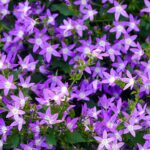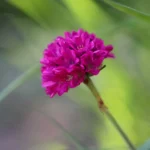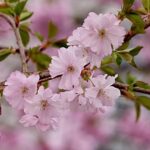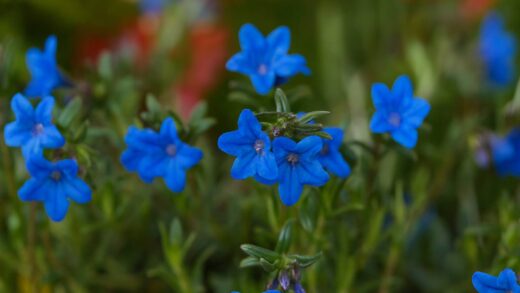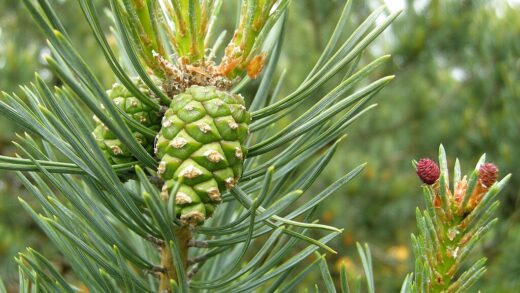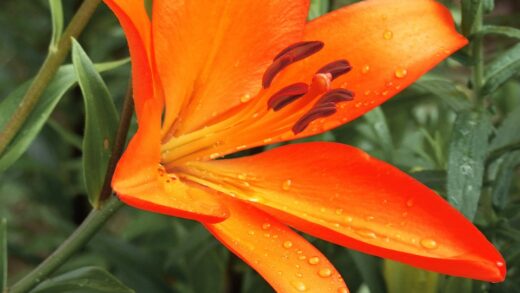The dwarf iris, known for its resilient nature and captivating blooms, is a rewarding addition to any garden, offering a splash of vibrant color in early spring. Despite its delicate appearance, this plant is remarkably robust and requires minimal intervention once established, making it an excellent choice for both novice and experienced gardeners. Proper care revolves around understanding its fundamental needs for sunlight, well-drained soil, and appropriate seasonal attention to ensure its longevity and prolific flowering. By mastering a few key principles of its cultivation, you can guarantee a stunning display year after year, transforming rockeries, borders, and containers with its charming presence and intricate floral structure.
Cultivating healthy dwarf irises begins with a deep appreciation for their soil requirements, which is arguably the most critical factor for their long-term success. These plants have an inherent intolerance for waterlogged conditions, making excellent drainage an absolute prerequisite for their survival and thriving. The ideal substrate is a light, sandy or gravelly loam that allows water to percolate freely, preventing the rhizomes from succumbing to rot. If your garden consists of heavy clay, significant amendment is necessary; incorporating coarse sand, fine gravel, and generous amounts of organic compost will improve its structure and aeration. This initial soil preparation is a foundational investment in the plant’s health, preventing a host of future problems.
The pH level of the soil also plays a significant role in the nutrient uptake and overall vigor of the dwarf iris. These plants generally prefer a neutral to slightly alkaline environment, with a target pH range between 6.8 and 7.5. Acidic soils can hinder the availability of essential nutrients and may lead to stunted growth and poor flowering. You can easily test your soil’s pH with a simple kit available at most garden centers. If the soil is too acidic, you can amend it by incorporating dolomitic lime or wood ash, which will gradually raise the pH to a more suitable level for these irises to flourish.
Beyond drainage and pH, the overall composition of the soil contributes to the plant’s resilience. While dwarf irises are not heavy feeders, a moderately fertile soil provides the necessary resources for robust growth and vibrant blooms. Incorporating well-rotted manure or garden compost during planting enriches the soil without creating an overly nutrient-rich environment that could promote excessive foliage at the expense of flowers. The goal is to create a balanced, friable soil structure that supports strong root development and allows the rhizomes to breathe, setting the stage for a spectacular spring display.
Ultimately, mimicking the plant’s native habitat is the surest path to success. Dwarf irises originate from the rocky steppes of Eastern Europe and Western Asia, where they are accustomed to gritty, free-draining soils and dry summer conditions. By replicating these environmental parameters in your garden, you provide the plant with the conditions it is genetically programmed to thrive in. This focus on foundational soil health, more than any other aspect of care, will ensure your dwarf irises not only survive but also multiply and put on a breathtaking show each spring.
More articles on this topic
The importance of proper location
Selecting the perfect location for dwarf irises is paramount and directly influences their flowering performance and overall health. These plants are true sun-worshippers and require a position that receives at least six to eight hours of direct sunlight per day, particularly during their active growing season in the spring. Abundant sunlight fuels the photosynthetic process necessary for developing strong rhizomes and initiating the formation of flower buds for the following year. A location with full sun exposure ensures compact growth, sturdy flower stems, and the most intense coloration of the blooms.
While sunlight is crucial, providing adequate air circulation is an equally important consideration that should not be overlooked. Good airflow around the plants helps to dry the foliage quickly after rain or irrigation, significantly reducing the risk of fungal diseases such as leaf spot or rust. Planting them in an open area, rather than crowded amongst dense, overarching perennials, prevents the creation of a humid microclimate that can foster pathogens. This is particularly important for preventing rhizome rot, as stagnant, damp conditions around the base of the plant are highly detrimental.
The physical placement within a garden design also contributes to their success and aesthetic appeal. Dwarf irises are perfectly suited for the front of borders, along pathways, or nestled into the crevices of rock gardens, where their diminutive stature can be fully appreciated. In a rock garden setting, the naturally sharp drainage provided by the stony environment is highly beneficial. When planting in borders, ensure they are not overshadowed by taller, more aggressive neighboring plants that could block the essential sunlight the rhizomes need to bake in during their summer dormancy.
Finally, consider the long-term aspect of the chosen location. Dwarf irises will gradually form clumps and will need to be divided every few years to maintain their vigor. Selecting a spot with easy access will make this future maintenance task much simpler to perform. Avoid planting them in low-lying areas of the garden where cold air and water tend to collect, as this can lead to frost damage on early blooms and increases the risk of rot. A slightly elevated position or a gentle slope often provides the ideal combination of sun exposure and drainage.
More articles on this topic
Seasonal care calendar
Spring is the season of peak activity and requires attentive care to support the dwarf iris’s growth and flowering. As soon as new green shoots emerge from the soil, it is essential to perform a gentle cleanup of the surrounding area, removing any winter mulch and dead leaves that could harbor pests or fungal spores. This is also the ideal time for a light application of a low-nitrogen, high-phosphorus fertilizer to encourage robust root development and abundant blooms. Monitor moisture levels carefully; while established plants are drought-tolerant, consistent moisture during this active growth phase is beneficial, especially if rainfall is scarce.
As the vibrant blooms of spring fade, the focus of care shifts towards preparing the plant for its summer dormancy and setting the stage for next year’s display. It is crucial to deadhead the spent flowers by snipping the flower stalks down to the base, which prevents the plant from expending energy on seed production. However, you must leave the foliage intact, as the leaves will continue to photosynthesize and transfer energy back into the rhizome for storage. This energy is vital for the development of the following season’s flowers, so resist the urge to trim back green leaves prematurely.
Summer is a period of rest for the dwarf iris, and your care routine should reflect this dormancy. During these hot months, the rhizomes benefit from being baked by the sun in relatively dry soil, which helps to cure them and prevent rot. For this reason, you should significantly reduce or even cease supplemental watering for established plants, allowing the soil to dry out between periods of rainfall. This dry dormancy is a critical part of their life cycle and is essential for their long-term health and prolific flowering in subsequent years.
Autumn care for dwarf irises is focused on tidiness and preparing the plants for the coming winter. Once the foliage has naturally yellowed and died back completely, typically after the first few light frosts, it can be trimmed back to a few inches above the ground. This cleanup removes potential overwintering sites for pests and diseases and keeps the garden looking neat. A final inspection of the rhizomes for any signs of softness or disease is a good practice, and ensuring the planting area is free of weeds will give the irises a clean start the following spring.
Water management throughout the year
Effective water management for dwarf irises hinges on understanding their cyclical needs, which change dramatically throughout the year. During the active growth period in early spring, when shoots are emerging and flower buds are forming, the plants require a consistent supply of moisture to fuel their rapid development. If the season is particularly dry, you should provide supplemental water, aiming for a deep soaking that encourages roots to grow downwards rather than frequent, shallow sprinklings. This ensures the entire root zone is hydrated, supporting the production of high-quality flowers and healthy foliage.
Once the flowering period has concluded and the plant transitions into its summer dormancy phase, its water requirements decrease significantly. This is a critical distinction in their care, as overwatering during summer is the most common cause of failure. The rhizomes require a period of warmth and relative dryness to cure properly, which is a natural defense against rot. In most climates with occasional summer rain, established dwarf irises will not need any supplemental irrigation at all. You should only consider watering during prolonged and severe drought conditions.
The type of soil in your garden will also heavily influence your watering strategy. In sandy, fast-draining soils, moisture will be lost more quickly, and you may need to water more frequently during the spring growth phase compared to a garden with heavier loam soil. Conversely, clay-based soils retain moisture for much longer, increasing the risk of waterlogging and rhizome rot. It is essential to assess your soil’s texture and adjust your watering practices accordingly, always allowing the top few inches of soil to dry out completely before irrigating again.
Observing the plants themselves is one of the best ways to gauge their water needs. While some wilting on a very hot day is normal, persistently droopy or yellowing foliage can be a sign of both underwatering and overwatering. To distinguish between the two, check the soil moisture a few inches below the surface. If the soil is bone dry, the plant needs water; if it is soggy, you are watering too much, and the yellowing is likely a symptom of developing root rot. This attentive observation allows you to respond precisely to the plant’s needs.
Nutrient and feeding strategies
A well-considered nutrient and feeding strategy for dwarf irises is one of moderation, as these hardy plants are not heavy feeders and can be harmed by excessive fertilization. The primary goal of feeding is to supplement the soil’s natural reserves to support strong rhizome development and prolific flowering, not to force lush foliage growth. Over-fertilization, particularly with high-nitrogen formulas, will often result in an abundance of weak, floppy leaves that are more susceptible to disease, while producing very few, if any, flowers. Therefore, a lean approach to feeding is always the most effective.
The ideal time to apply fertilizer is in the early spring, just as the new shoots are beginning to emerge from the ground. This timing ensures that nutrients are readily available to the plant as it enters its most vigorous phase of growth and flower production. A single, well-timed application is typically sufficient for the entire year. Applying fertilizer too late in the season, especially after flowering, can stimulate new growth that may not have time to harden off before winter, potentially leading to frost damage and weakening the plant.
When selecting a fertilizer, it is crucial to choose a formulation that is low in nitrogen (N) and higher in phosphorus (P) and potassium (K). Phosphorus is essential for robust root development and the formation of flower buds, while potassium contributes to overall plant vigor and disease resistance. A granular, slow-release fertilizer with a ratio such as 5-10-10 or even bone meal, which is naturally high in phosphorus, are excellent choices. This type of formulation provides the specific nutrients the iris needs without encouraging the undesirable leafy growth associated with high-nitrogen feeds.
Application methods are just as important as the fertilizer itself to prevent damage to the plant. You should sprinkle the granular fertilizer on the soil surface around the base of the plant, being careful to avoid direct contact with the foliage or the rhizome itself, which can cause chemical burns. After application, gently scratch the fertilizer into the top inch of soil and water it in thoroughly. This helps to activate the nutrients and ensures they are carried down into the root zone where they can be absorbed effectively by the plant.
Long-term health and rejuvenation
Ensuring the long-term health and vitality of dwarf irises involves a proactive approach that extends beyond basic seasonal care, focusing on rejuvenation and maintaining a healthy growing environment. One of the most important practices for long-term success is the periodic division of the clumps. Over time, typically every three to five years, the rhizomes will become crowded, leading to a decrease in flower production and a depletion of nutrients in the central part of the clump. This division process is essential for reinvigorating the plants and ensuring they continue to flower profusely.
The best time to divide dwarf irises is in the late summer or early autumn, after the foliage has died back and the plants are fully dormant. To do this, carefully lift the entire clump out of the ground with a garden fork. Gently shake off the excess soil and use your hands or a sharp, sterilized knife to separate the mass of rhizomes into smaller sections. Each new division should have at least one or two healthy fan of leaves (or buds for them) and a solid, firm rhizome with healthy roots attached.
During the division process, you have an excellent opportunity to inspect the health of your stock. Discard any rhizomes that appear soft, mushy, or show signs of rot or borer infestation. This selection process is a critical form of sanitation that prevents the reintroduction of diseased plant material back into your garden. Trimming the leaves back to about one-third of their length on the healthy divisions reduces water loss and helps the plant focus its energy on establishing new roots after replanting.
Rejuvenation is also about maintaining the quality of the growing environment itself. When you replant the divisions, take the opportunity to amend the soil with fresh compost or a bit of bone meal to replenish the nutrients that have been used up over the years. By regularly dividing your clumps and refreshing their growing conditions, you not only multiply your stock of these beautiful plants but also ensure that each one remains vigorous, healthy, and capable of producing a stunning display of flowers each spring, guaranteeing their place in your garden for many years to come.
📷 Jerzy Opioła, CC BY-SA 4.0, via Wikimedia Commons









